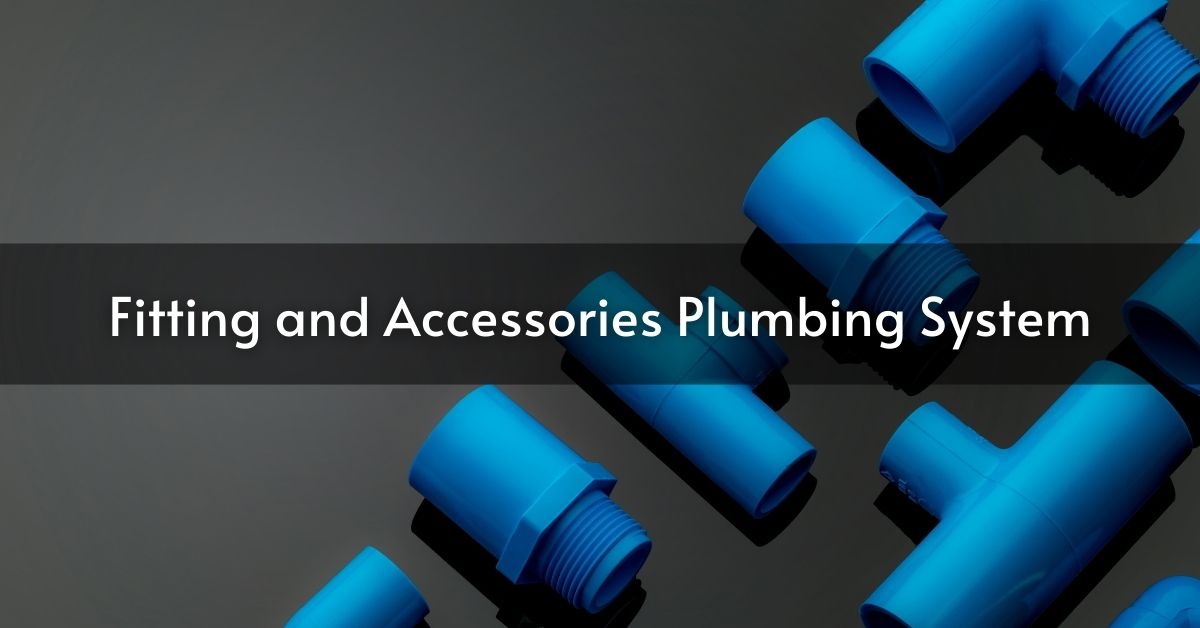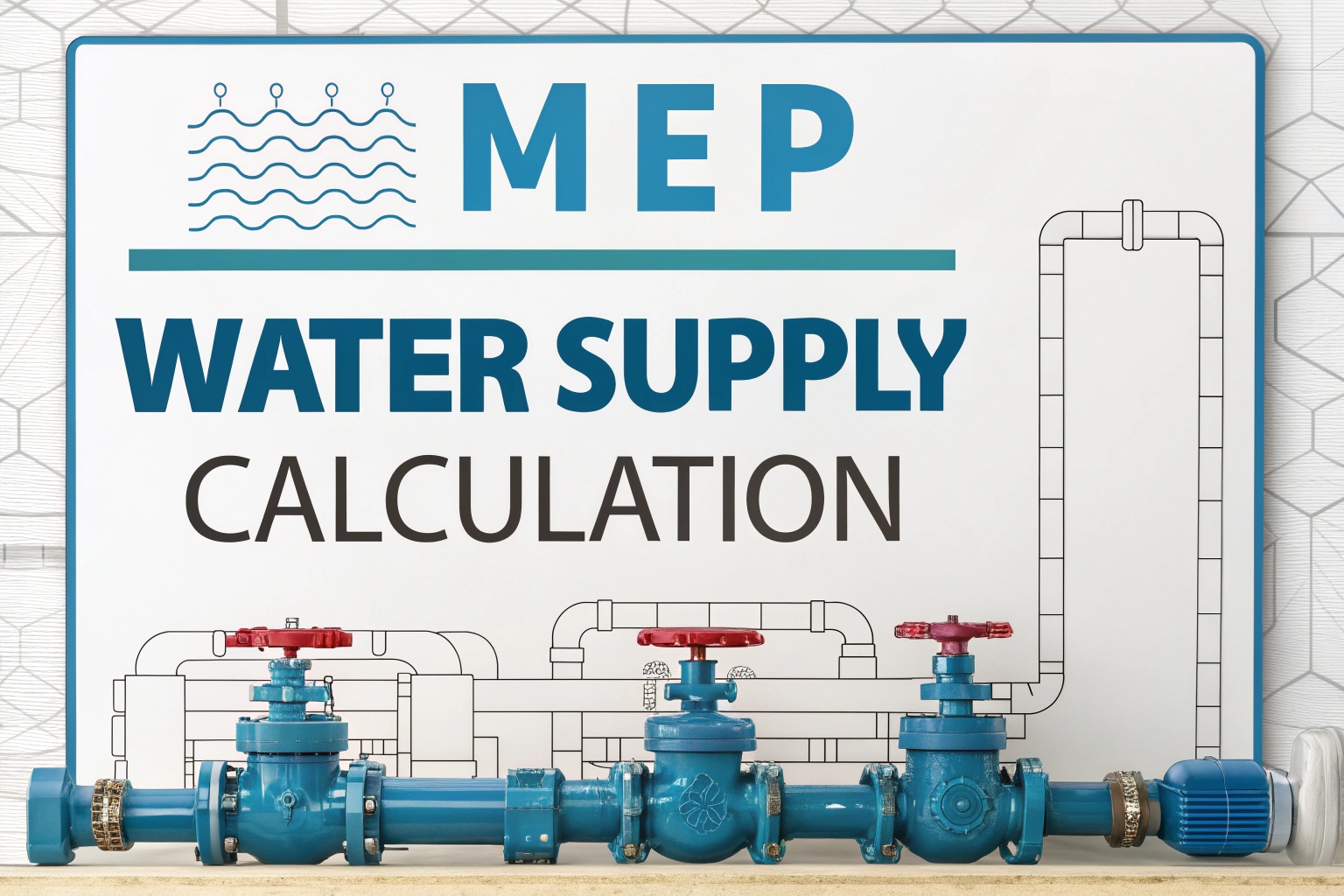When talking about plumbing design, fitting and accessories plumbing system play an important role. Anyone who works with these systems needs to know about these parts. This chapter describes different types of fittings and accessories, their uses, and how they work to maintain the plumbing system effectively. Fittings connect pipes, alter flow directions, or change the size of the pipe. Accessories add value to the way the system operates while running smoothly and being made easy to use.
What are Pipe Fittings?
Pipe fittings connect pipes in plumbing and drainage systems. They join pipes of the same or different sizes to extend the pipeline and control water flow. These fittings come in materials like copper, iron, PVC, and brass. Depending on their type, you can use them to combine, redirect, or reduce water flow. Pipe fittings come in various sizes and shapes and are essential for plumbing and drainage systems in industrial, commercial, and residential settings.
Types of Pipe Fittings Based on Jointing System
- Threaded Joint: This joins threaded pipes or a threaded pipe with a threaded fitting. Threaded steel pipes and fittings are generally used in buildings to carry natural gas or propane, and it is also used in fire sprinkler systems because of its resistance to high temperature.
- Soldering: Soldered or capillary fittings join two different metals by melting solder. They are used for the great majority of applications for copper connecting pipes in plumbing and electronics, metal work.
- Metal Heat Welding: It joins metals or thermoplastics by melting them using high heat. Metal welded fittings can replace threaded ones with the elimination of leakage. So, this type is usually used in carrying pipes holding flammable, toxic, and costly materials where leakage cannot be tolerated.
- Plastic Heat Welding: It is a molecular level of bonding two thermoplastics. Plastic welded pipes and fittings are widely used in gas and chemical transportation as well as semiconductor applications and also widely found in medical devices and chemical production.
- Solvent Cement: Solvent cement is available in semi-liquid as well as gel forms and can be used to join PVC and other plastic pipes. It is very easy to apply.
- Rubber Ring: This method seals by compressing a rubber ring in the socket of a pipe or fitting when the pipe spigot is inserted into the socket.
- Compression: It connects two pipes or a pipe to a fixture or valve. Compression fittings, made of brass, stainless steel, or plastic, are prone to leaks and are mostly used in places like kitchen and bathroom sinks or hidden in walls.
Types of Pipe Fittings
Pipe fittings differ in shape and size and are used for certain purposes in plumbing systems. Among the most common types of fittings include:
Bend or Elbow (90° or 45°)
Bends are used for changing the direction of liquids in a pipe. They offer a smooth curving design, therefore, liquids can be allowed to flow freely with a minimal pressure drop.
Tee or Wye
Tees and Wyes join three pipes together. Tees have one inlet and two outlets that form a T shape, which is at an angle of 90°. Wyes are shaped like the letter Y and have two inlets at 45° joined to make one outlet. They are commonly used for drainage systems.
Socket/Coupler
A coupler is a short pipe with sockets on both ends to join the pipes. It is used to mend broken or leaking pipes.
Bush Fittings
Bush fittings are also known as reducer bushings. They connect pipes of different sizes. An end fits inside a large pipe while the other one fits into a small-sized pipe.
End Cap
The end cap fittings seal the end of a pipe so that no gas or water will flow. They are installed on the pipeline’s end or on headers for future connections.
Flange
Flange fittings are just flat, round pieces with a use of bolts and clamps to create a seal. They are usually used when pipes need to pass through walls, ceilings, and floors.
Union
Unions, like the couplers, connect two pipes, but they have three parts: one is the nut, one is the female, and the other is the male in which the nut tightens once the male and female join each other.
Valve
Valves control fluid flow. There are many types, including ball, butterfly, and check valves. Check valves allow fluid to flow in only one direction.
Trap
Fitted under sinks, trap fittings are U or P-shaped. It catches debris to prevent deep clogs and stop bad odors from entering the building.
Adaptor
Connectors connect pipes of assorted types. They can have either female or male threads, and if they don’t have threads, they can be welded, soldered, or glued.
Plug
Plugs are similar to caps in that they seal the pipe at the end, but unlike the cap, which seals over the threaded opening, a plug seals inside the threaded opening.
Nipple
A nipple is essentially a short pipe with female-threaded ends on both the male and female ends so that two female-threaded pieces of pipe or fittings may join each other.
Pipe Fitting Applications
- Water Supply: Pipe fittings form the greatest part of any plumbing system. They connect straight pipes or segments of tubes. Elbows, tees, sockets, and reducers allow a change in direction of flowing water either by reduction or by keeping the same pipe size .
- Drainage: In drainage systems, pipe fittings enable the transportation of liquid waste inside buildings and commercial places. They can easily drain water from walkways and driveways.
- Chemicals: Pipe fittings safely transport poisonous chemicals and waste safely. Pipe fittings protect valuable equipment against high pressure.
- Pneumatic Systems: Pipe fittings connect pipes, tubes, or hoses in gas systems under pressure. Pneumatic fittings have tighter seals and low pressure requirements compared to hydraulic fittings.
- Pressure Applications: PVC pipes and fittings work well in applications where pressure will be involved such as water service, heating, cooling systems, gas distribution, and fire protection.
- Non-Pressure Applications: PVC pipes and fittings can also be installed in non-pressure applications since the material does not corrode. For such applications, it lasts longer than a metal pipe.
Important Plumbing Accessories
Apart from fittings, many accessories further enhance the performance of plumbing systems. The most important ones are listed below:
1. Valves
Valves regulate the flow and pressure in a plumbing system. The most common categories include:
- Gate Valve: It is used for water shutoffs. It should either be completely open or completely closed to prevent difficulty.
- Globe Valve: The application of this valve is for regulating fluid flow so that less or more amount of water can be served.
- Angle Valve: Situated often under sinks, it controls the flow to faucets and fixtures.
- Pressure Reducing Valve (PRV): This is especially helpful in controlling water pressure in tall buildings. It protects fixtures from damage due to high pressure.
2. Water Hammer Arrestors
These are devices that stop the banging noise caused by sudden changes in flow or water. The shock is absorbed so that water keeps on flowing. These accessories, along with fittings, are essential for a well-functioning Fitting and Accessories Plumbing System.
Calculating Pressure and Flow
Proper determination of water pressure and flow rates is of utmost importance in plumbing design. You can determine the pressure at the bottom of a water column by this formula:
P = h x 0.433 psi
Here, the height of the column of water is represented by h. This computation enables you to determine the appropriate size and type of fittings and valves to maintain steady pressure in your plumbing system.
Conclusion
Understanding plumbing fittings and accessories is necessary to design effective systems. Selecting the correct parts will increase performance with fewer pressure drops and steadier flow rates. The following guide provides you with a basic base upon which you can improve your plumbing design skills. The Fitting and Accessories Plumbing System plays a big role in making everything work smoothly. Practice with actual projects, and you will be rewarded with more reliable and efficient plumbing systems for both homes and businesses.
FAQs
What is a fitting in a plumbing system?
A fitting is an element in the pipe system that is used to connect various parts of a pipe or tube. In this way, it can help to change the pipe’s size or shape and is also used to meter or adjust water flow.
What are accessories in plumbing?
Some of the most basic plumbing tools comprise a set of pliers, pipe wrenches, Teflon tape, and a plumber’s snake. A basin wrench is very handy for doing things in very tight spaces. Pipe fittings connect pipes or change direction and/or size.
What are plumbing fixtures and accessories?
A plumbing fixture is any device that is affixed to the pipe system of a dwelling for the purpose of dispensing or consuming water. Probably the most familiar types are sinks, toilets, bathtubs, showers, faucets, urinals, bidets and drinking fountains.
What are fittings and what types are there?
Fittings are handy for joining pipes or cutting off when needed. They have various shapes and sizes. Installing the fittings is expensive because of different materials and instruments used in the processes. Plumbing systems would otherwise not be in operation without them.
Read More – Vertical Inline Pumps: Maximizing Efficiency in Your System













